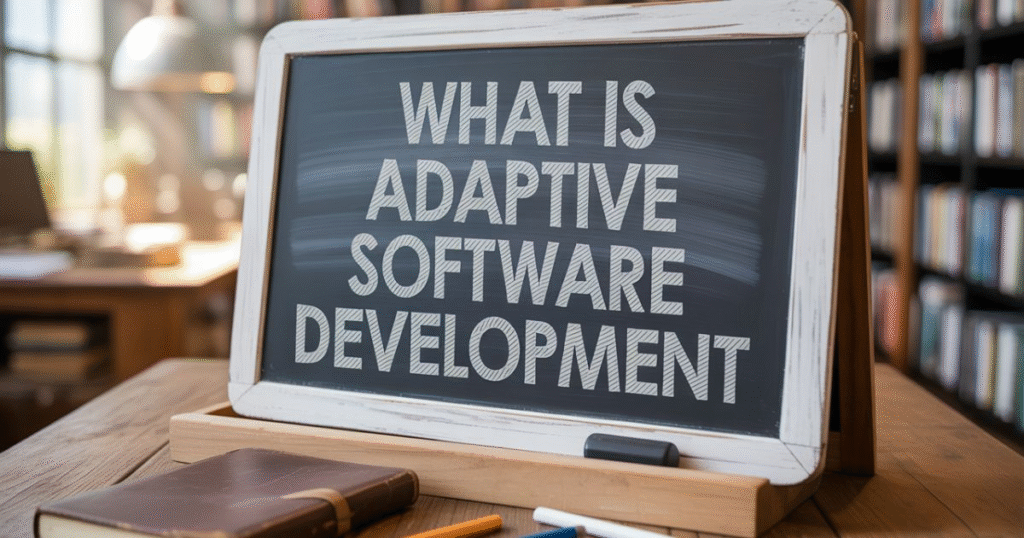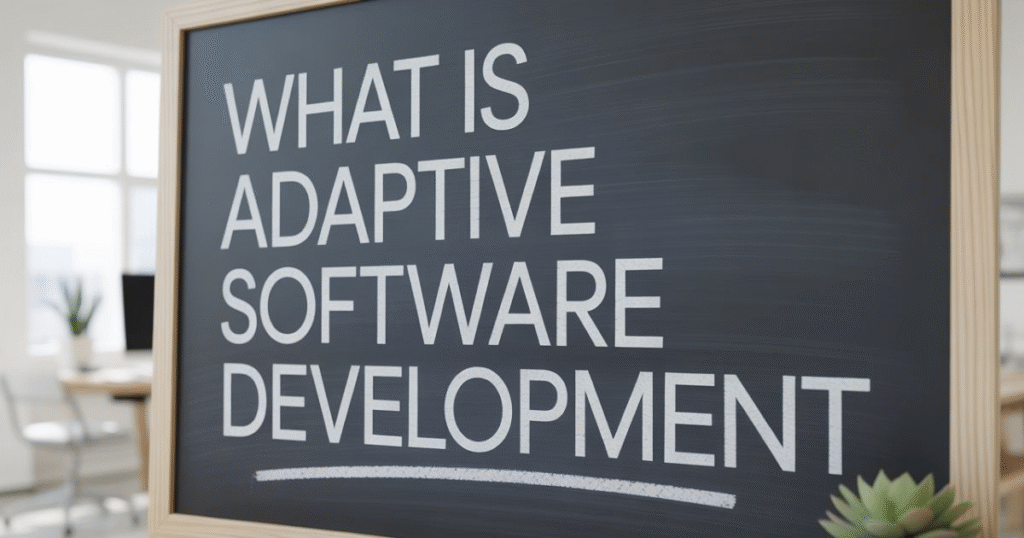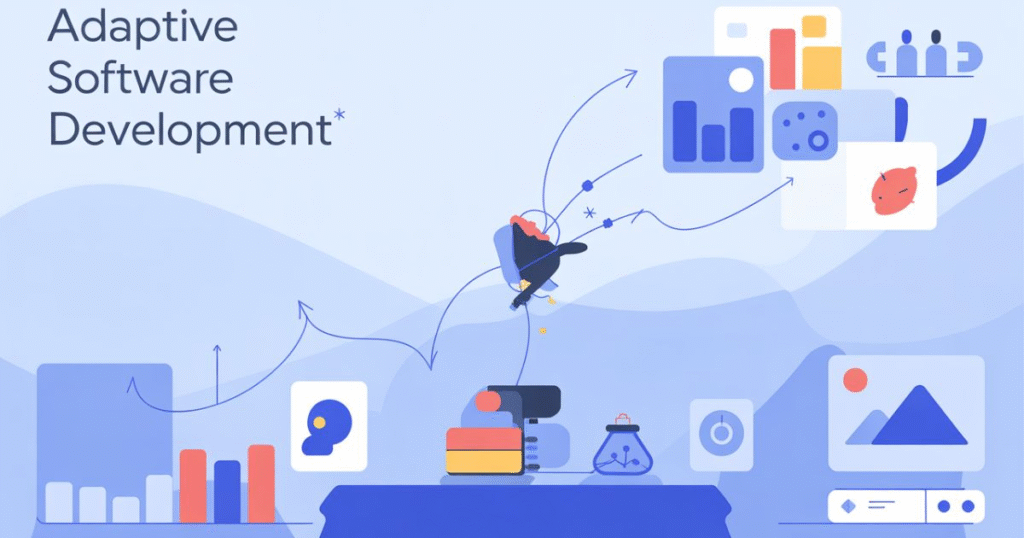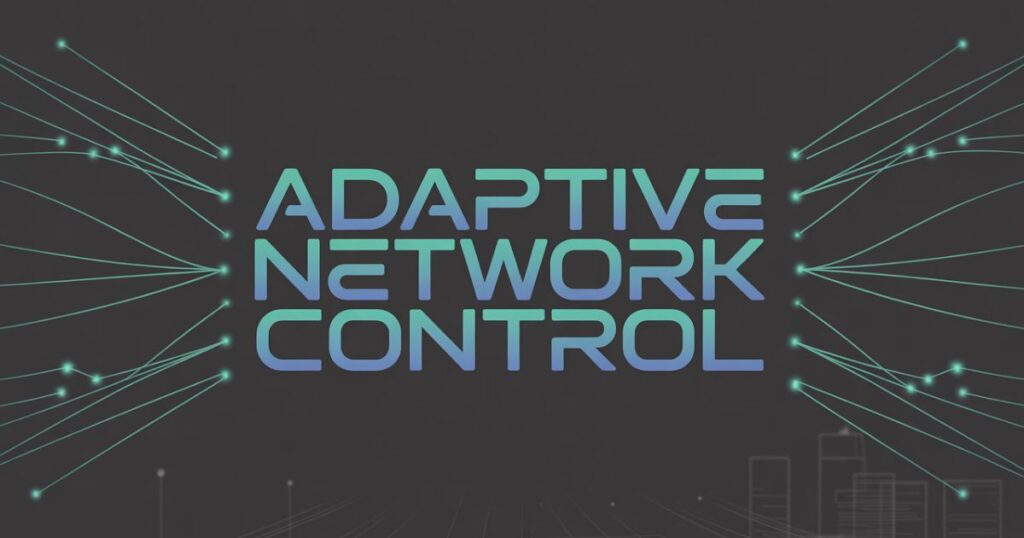Adaptive Software Development (ASD) is an advanced approach within Agile software development that emphasizes flexibility, collaboration, and learning over rigid processes. Introduced in the 1990s software methodologies era by Jim Highsmith and Sam Bayer, ASD replaced the limitations of the Waterfall model vs Agile conflict by introducing an evolving cycle of Speculate → Collaborate → Learn.
This cycle allows teams to embrace change, improve responsiveness, and deliver value through short, structured iteration cycles. Unlike traditional methods, ASD encourages continuous stakeholder input, risk management, and adaptive planning, making it ideal for complex environments where requirements shift frequently and rapid responses are critical for success.
What is Adaptive Software Development (ASD)?
Adaptive Software Development (ASD) is an Agile software development framework designed to handle uncertainty in complex projects. It replaces rigid planning with adaptive planning and uses iteration cycles to deliver working software through feature-based delivery. This approach ensures that stakeholder involvement and feedback loops are part of every stage.
ASD follows the Agile Manifesto (2001) by prioritizing individuals, collaboration, and self-organizing teams. Unlike older software development frameworks, ASD does not resist change. Instead, it promotes rolling wave planning where details are refined as the project evolves, allowing for true incremental delivery.
The Origins and Evolution of Adaptive Software Development
Adaptive Software Development was born in the 1990s software methodologies era as a response to the limits of Rapid Application Development (RAD). While RAD focused on quick delivery, ASD improved it by adding structure and an emphasis on learning. Jim Highsmith later wrote Adaptive Software Development: A Collaborative Approach to Managing Complex Systems (book) to explain this model.
Over time, ASD influenced software engineering methodologies across industries. It became an alternative to rigid Waterfall model vs Agile conflicts and evolved into a foundation for business-wide agility. Many software consulting services and enterprises in the USA now use ASD alongside Scrum methodology and Kanban methodology for complex projects.
Core Principles of Adaptive Software Development
The heart of ASD is built on collaboration, learning, and adaptability. The Speculate → Collaborate → Learn (ASD cycle) ensures that projects are never locked into a single path. Instead of fixed requirements, ASD allows stakeholder involvement at every stage.
Another principle is to fail fast, learn fast. This promotes resilience by accepting errors early and fixing them before they grow. Just like chaos engineering (resilience testing) in modern systems, ASD thrives in uncertain and evolving environments.
The Adaptive Software Development Life Cycle
The ASD life cycle replaces traditional software development life cycle (SDLC) stages with a three-phase approach. In the speculation phase, teams create adaptive plans that anticipate change. The collaboration phase emphasizes teamwork across cross-functional teams to ensure smooth execution.

The final phase, learning, ensures that knowledge gained from iteration is shared widely. Tools like knowledge sharing platforms and cloud-based collaboration tools (Slack, Zoom, Teams, Notion, Miro) help capture insights and feed them into the next cycle.
Adaptive Software Development Methodology Explained
The ASD methodology provides mission-driven execution rather than rigid task lists. It encourages teams to focus on product-centric teams that deliver real value through incremental delivery. Each step is supported by strong feedback loops that make sure improvements happen quickly.
Unlike rigid software engineering methodologies, ASD allows adaptive frameworks beyond IT. Today, companies use ASD principles in HR, finance, and even business planning, making it a model for continuous improvement across industries.
Adaptive Software Development vs Traditional Models
The Waterfall model vs Agile debate highlights why ASD stands apart. In the Waterfall model, requirements are locked early, which makes it hard to adapt. ASD, however, allows rolling wave planning so requirements evolve with each iteration cycle.
Traditional methods often fail in digital transformation in IT projects because change is constant. ASD, with its risk-driven development, helps organizations stay resilient, improve speed, and reduce failure rates.
Adaptive Software Development vs Other Agile Frameworks

When compared to Scrum methodology, ASD focuses more on collaboration and learning rather than strict roles. Unlike Kanban methodology, ASD emphasizes structured iteration cycles and team learning. Compared to Extreme Programming (XP), it has broader business adaptability.
The main difference is that ASD prioritizes mission-driven execution and adaptive planning over formal processes. While other software development frameworks aim for agility, ASD adds a deeper focus on knowledge transfer and stakeholder involvement.
Advantages of Adaptive Software Development
The biggest advantage of ASD is its flexibility and responsiveness. By embracing time-boxing in software, teams can react faster to customer needs and reduce risks. ASD aligns well with continuous integration (CI/CD) and DevOps integration, making delivery smoother.
Another advantage is business-wide agility. With cross-functional teams and self-organizing teams, ASD encourages shared responsibility and stakeholder involvement at every level. This improves delivery speed and customer satisfaction.
Disadvantages of Adaptive Software Development
One challenge of ASD is the risk of scope creep. Since requirements are flexible, projects may expand if not managed carefully. This makes strong agile backlog management essential.
Another disadvantage is the steep learning curve. Teams new to Agile project management tools and software consulting services may struggle with adaptive planning and incremental delivery at first.
Best Practices for Successful ASD Implementation
The most successful ASD projects build a culture of collaboration. This means encouraging knowledge sharing platforms and using cloud-based collaboration tools (Slack, Zoom, Teams, Notion, Miro) to keep everyone aligned.
Another best practice is using feedback loops consistently. Teams should adopt no-code development tools for quick prototyping and integrate Selenium, Postman, Cypress (testing tools) into their workflow for faster validation.
Tools and Techniques Supporting ASD
The rise of Agile project management tools such as Jira, Trello, and Asana has made ASD easier to implement. These tools support incremental delivery, manage agile backlog management, and track iteration progress.
For automation, tools like Jenkins, CircleCI for automation, GitHub / GitLab for version control, and AI-driven testing platforms enable continuous integration (CI/CD). Together, they create seamless workflows for software development life cycle (SDLC) management.
How to Get Started with Adaptive Software Development
Starting with ASD requires assessing organizational readiness. Companies should begin with pilot projects before moving into full-scale digital transformation in IT. Training self-organizing teams in software development frameworks is also crucial.
Next, firms should invest in software consulting services and use modern cloud-based collaboration tools. This ensures smooth adoption, reduces friction, and builds confidence in the new process.
Common Challenges in Adaptive Software Development
A common challenge in ASD is dealing with uncertainty. Teams must embrace risk-driven development while maintaining delivery speed. This requires resilience and trust in feedback loops.
Another challenge is change management in software development. Employees often resist new software engineering methodologies. Leaders must invest in knowledge sharing platforms and encourage continuous training.
Real-World Applications of ASD
In the USA, custom enterprise software development companies often use ASD for projects that demand flexibility. Startups in Silicon Valley prefer ASD because of its fail fast, learn fast principle.
Large enterprises also apply ASD in sectors like finance and healthcare. By using adaptive frameworks beyond IT, companies improve customer experience and achieve better business-wide agility.
Future Trends in Adaptive Software Development

ASD is moving towards AI-driven testing and cloud-based collaboration tools for faster decision-making. Product-centric teams and chaos engineering (resilience testing) are also gaining popularity for large-scale systems.
Future trends also include stronger DevOps integration with ASD. This combination ensures continuous integration (CI/CD), automated testing, and seamless scaling.
Adaptive Software Development and Business Impact
The business impact of ASD is significant. It helps organizations achieve faster incremental delivery, reduce risks, and improve stakeholder involvement. By focusing on mission-driven execution, ASD ensures better ROI.
ASD also drives digital transformation in IT. It allows businesses to stay competitive, adapt to shifting markets, and build resilient product-centric teams for the future.
Conclusion: Why Businesses Should Consider Adaptive Software Development
Adaptive Software Development (ASD) is more than a method—it’s a mindset. By emphasizing collaboration, adaptability, and learning, ASD helps companies thrive in a fast-changing digital world.
For businesses in the USA, adopting ASD means embracing business-wide agility, better ROI, and successful digital transformation in IT. The future belongs to companies that can fail fast, learn fast, and continuously adapt.
FAQs
What do you mean by adaptive software development?
Adaptive Software Development (ASD) is an agile methodology that focuses on iterative learning, collaboration, and flexibility to handle changing requirements.
What is adaptive software?
Adaptive software is a program designed to adjust, scale, and evolve with new user needs, environments, or business requirements.
What is the meaning of adaptive development?
Adaptive development means a flexible process of building software where plans, features, and goals change based on feedback and uncertainty.
What is the difference between adaptive and agile approach?
Agile is a broad philosophy, while adaptive is a specific agile model focusing on speculate, collaborate, and learn cycles.
Is Scrum an adaptive model?
Yes, Scrum methodology is considered adaptive because it uses short sprints, feedback, and continuous improvements.


